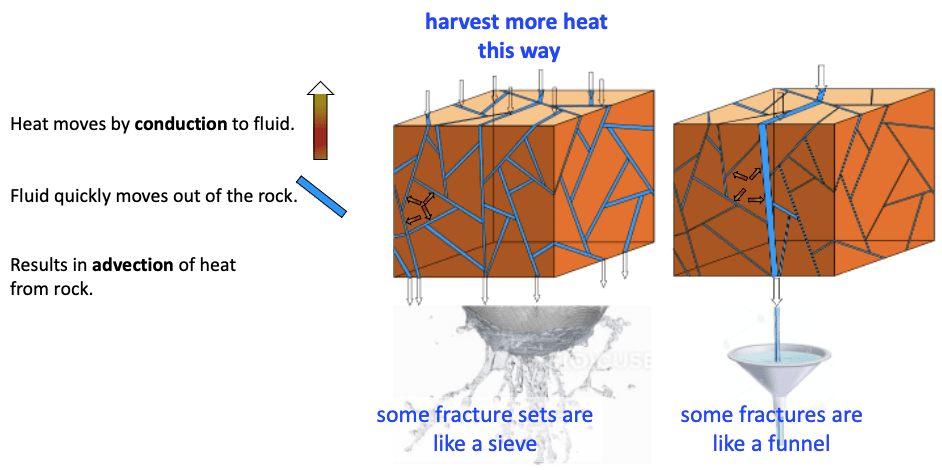To harvest deep geothermal heat, water must be able to pass through rocks deep beneath the surface, picking up heat as the water moves through the rocks. Therefore one of major objectives of the Cornell University Borehole Observatory is to learn about the capacity of rocks deep beneath the Cornell campus to transmit water.
Rocks are made of solid mineral crystals. But there are holes among the crystals and these holes can hold water. In some rocks, the holes are dispersed throughout the rock and are called “pores”. In other rocks, the only significant holes are cracks, or “fractures,” within the rock. These cracks also commonly contain water. In some rocks, there are both numerous pores and fractures.
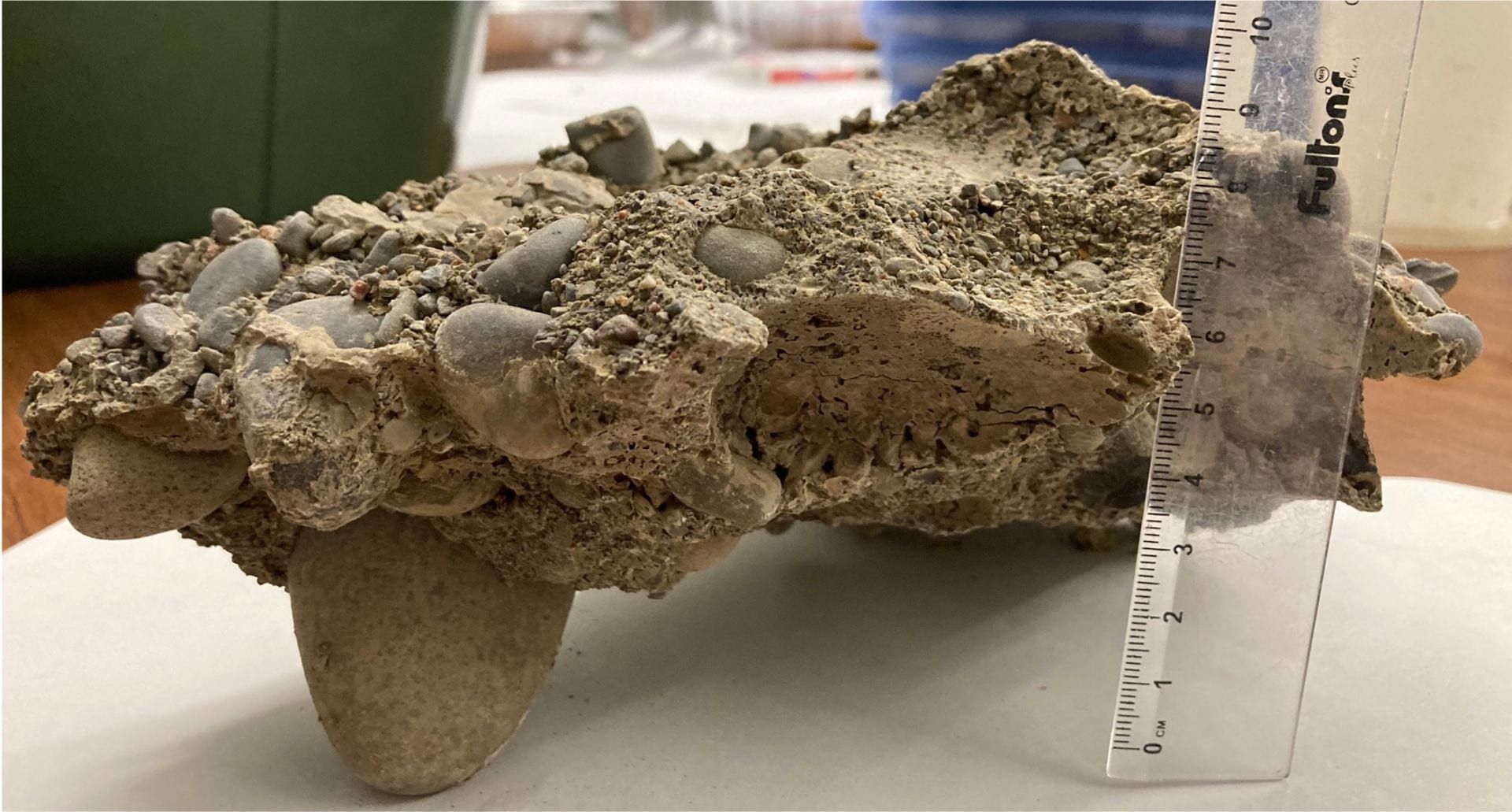
This an example of a rock with a numerous natural “pores,” that is, holes within the rock. Such holes may contain gases or liquids.
The ruler is marked in centimeters.
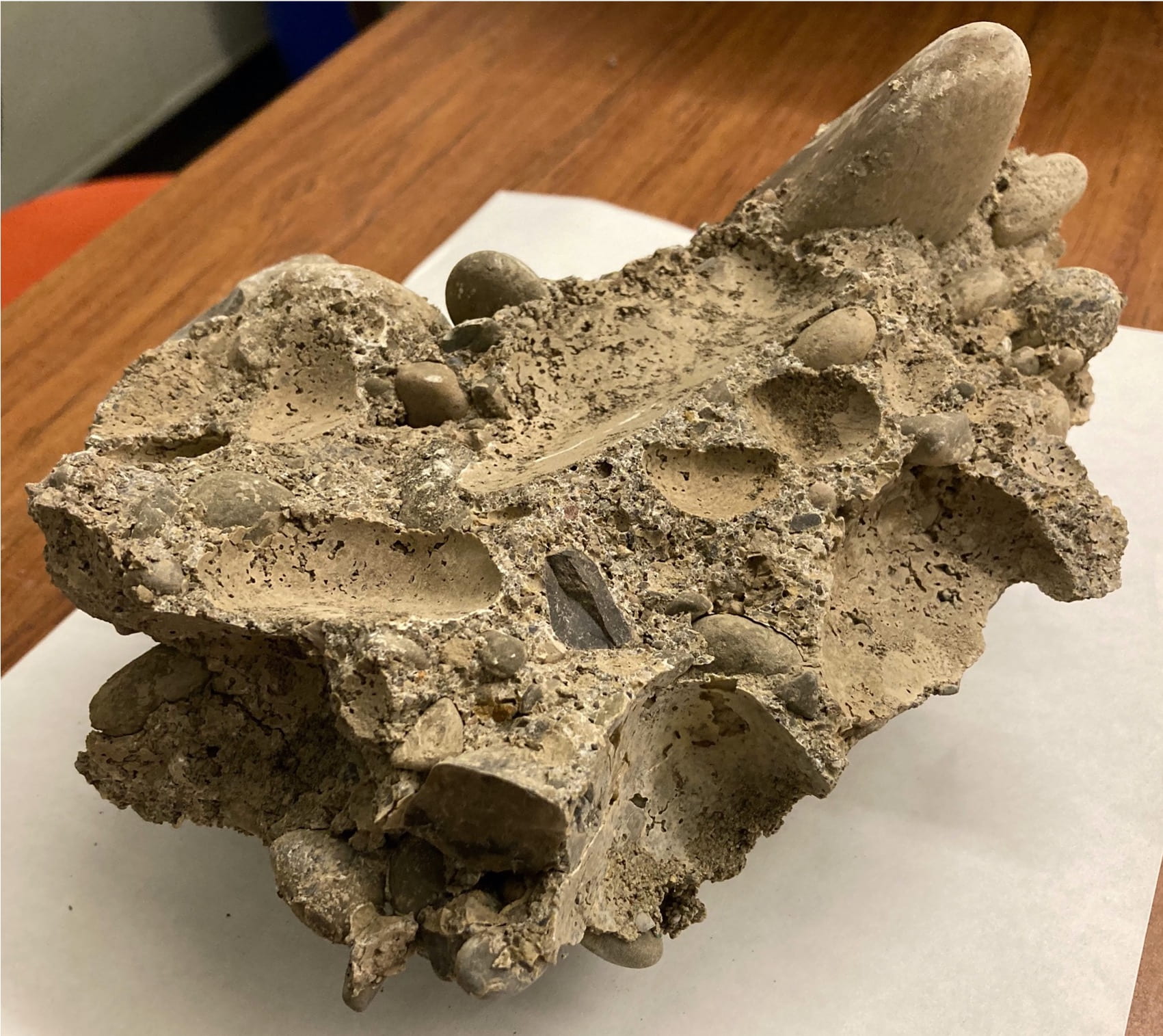

This rock happens to have a broad depression on top. Water can be poured into the depression, where it will begin seeping into pore spaces.

In this image, you can see about 1/2 ounce of water pooled on the rock.

After about 2 minutes, the water has mostly seeped into the pore spaces of the rock.
Eventually all of the water will drained out of the depression on the top, into the rock. The water has not flowed out the bottom of the rock, because it is now stored in the pores. This rock has a lot of pores, or “high porosity.”
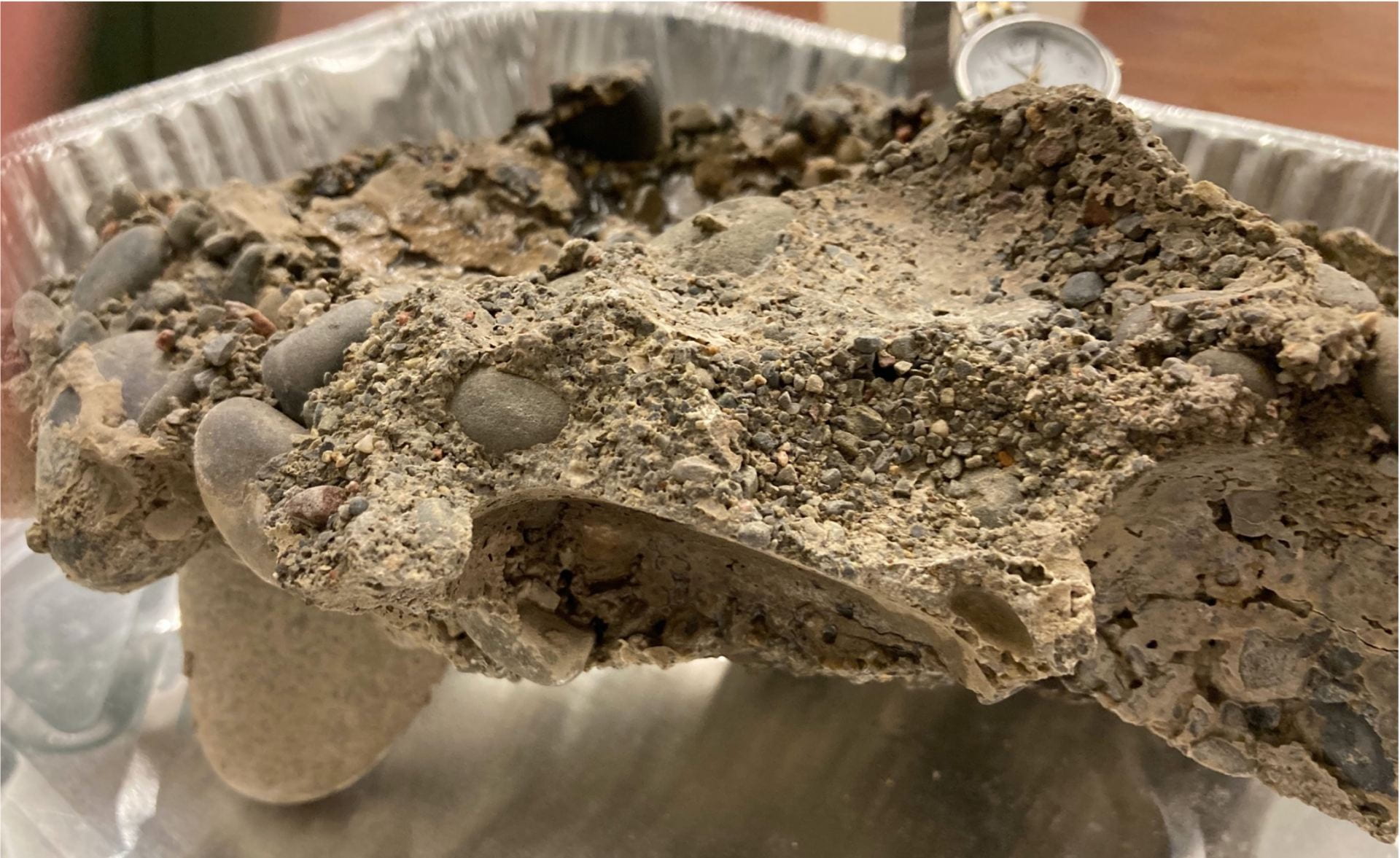
To generate deep geothermal heat, however, it won’t be enough to simply learn that a rock has open spaces in which water might be stored. We need to know if water can pass through the rock. That is, we want to learn if some of the rocks where the temperatures are high can transmit water among the pores and fractures. That characteristic is known as the “permeability” of the rock. A rock with high permeability can transmit a lot of water, while one with low permeability is a barrier to water movement.
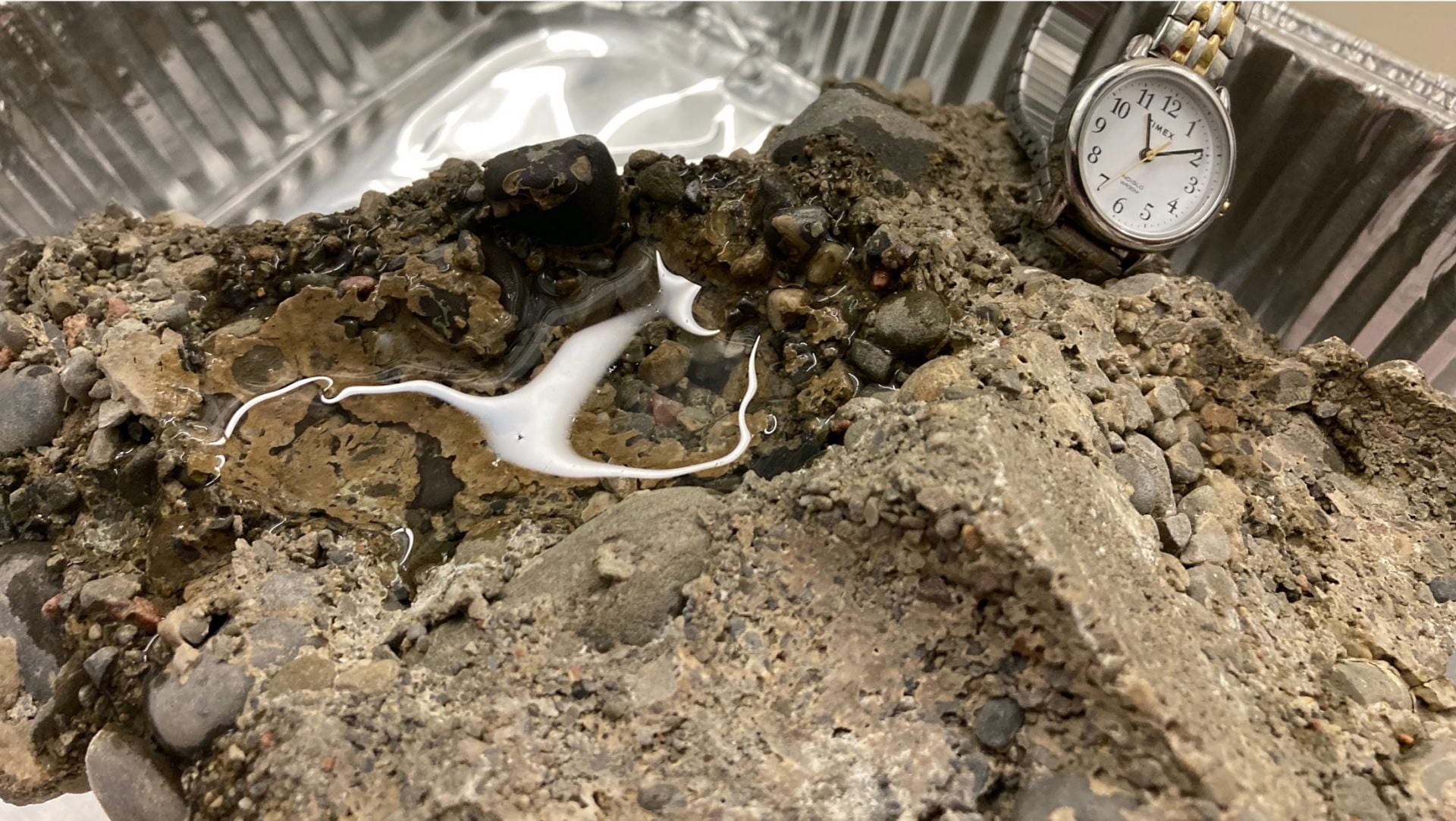
It is possible to repeatedly pour water into the depression in the rock. Each time some of the water will pool in the depression, but some will eventually move into pore spaces.

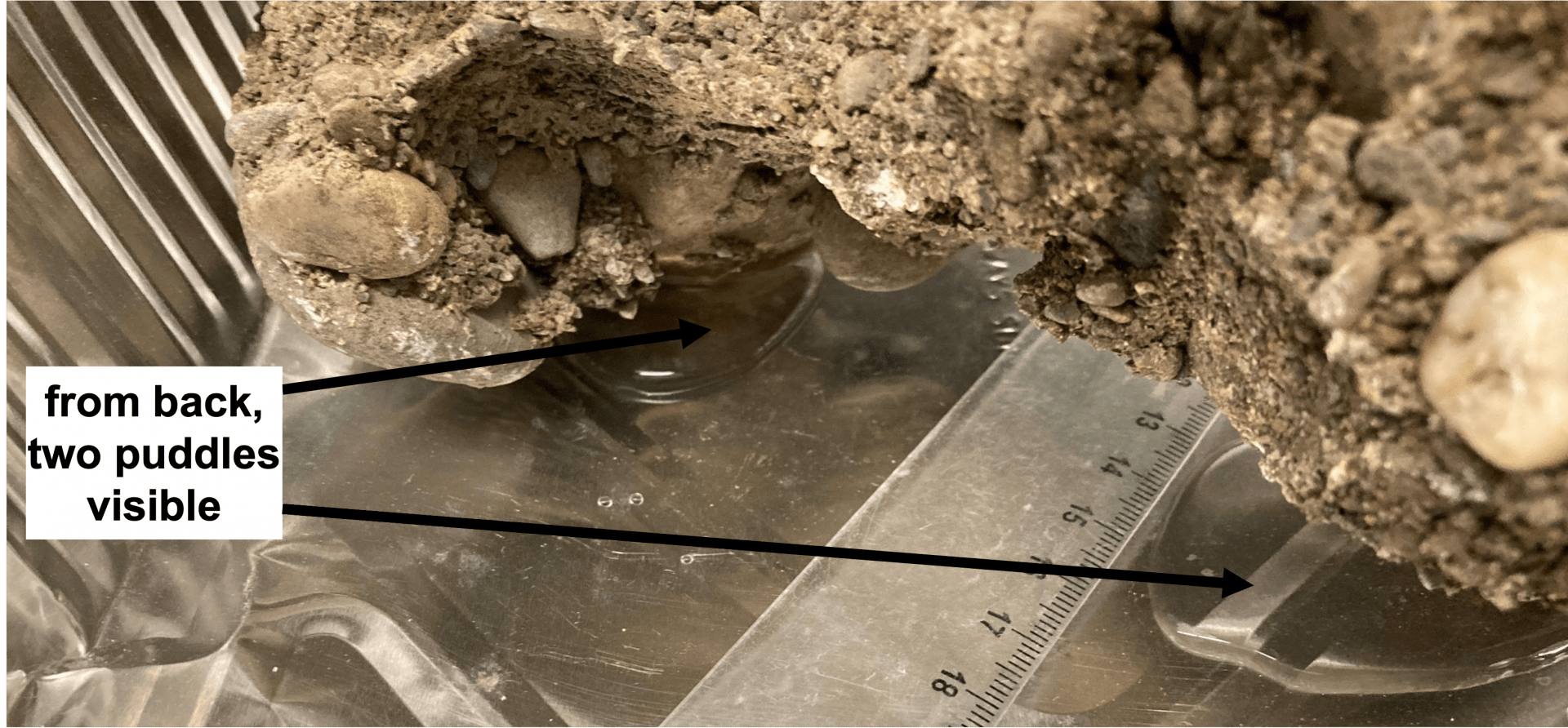
In this rock eventually some of the water will leak back out of the rock, forming puddles under the rock. This shows that water moved through the rock. Therefore, the rock is not only highly porous, but it also transmits well the water. This capacity to transmit water is referred to as “high permeability.”
Water transmission through fractures
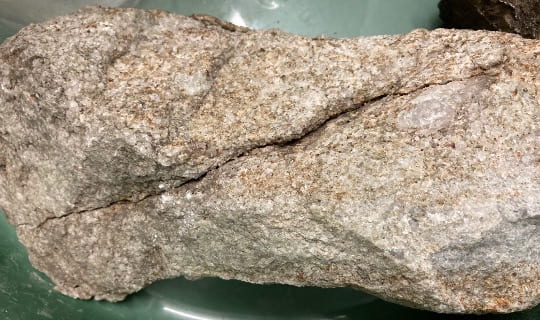
Fractures link together open space over longer distances than pores, and so are more likely to allow water to flow through rocks. Therefore, measurements to be conducted at the Cornell University Borehole Observatory are designed to reveal fractures and to locate depth zones where fractures are abundant or rare. The CUBO data will also reveal if the fractures tend to be oriented in a particular direction or if many of the fractures cross one another. To find out which sets of fractures actually transmit water will require water-flow tests after the drilling is completed.
By comparing data on fractures with the results of the water-flow tests, we will learn which fractures are interconnected and might allow relatively rapid flow. In depth zones where water does flow, we’ll try to determine whether the connections between fractures are long, complex paths, which would increase the amount of heat that is transferred from the rocks to the water passing through them.
Fractures are openings in rock. They not only hold water, but if they are interconnected, water can flow through them.
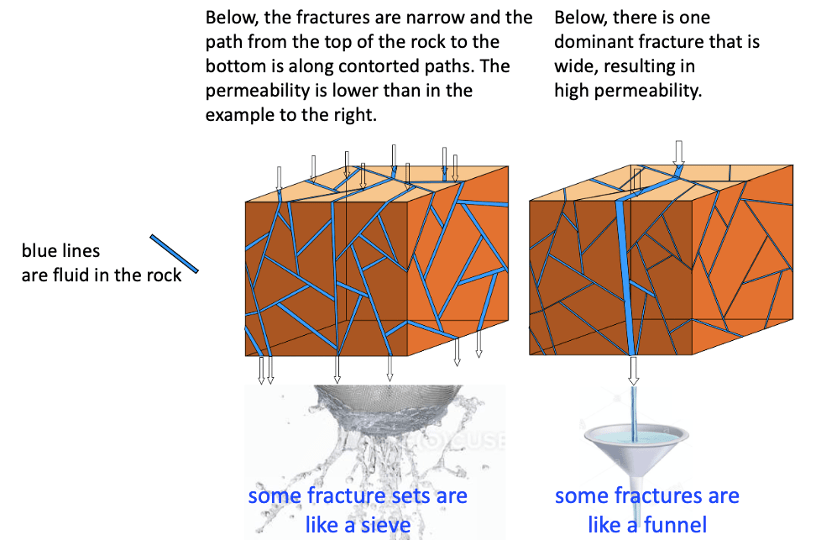
To extract heat, more contorted paths for water flow are better.
